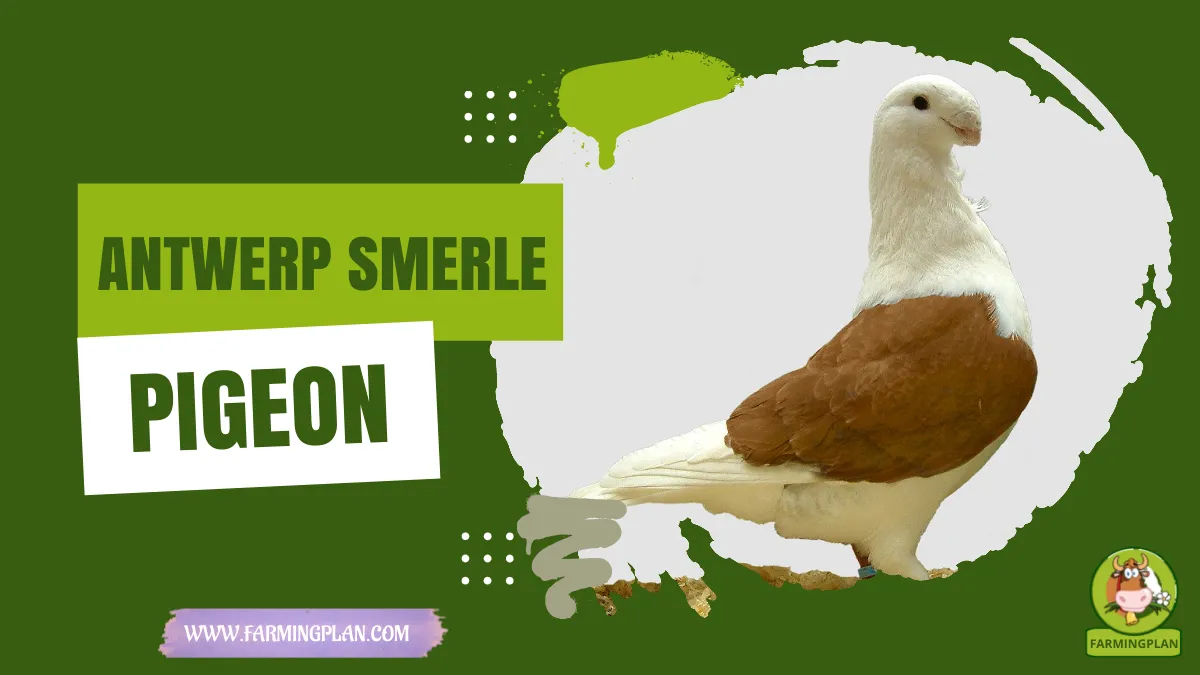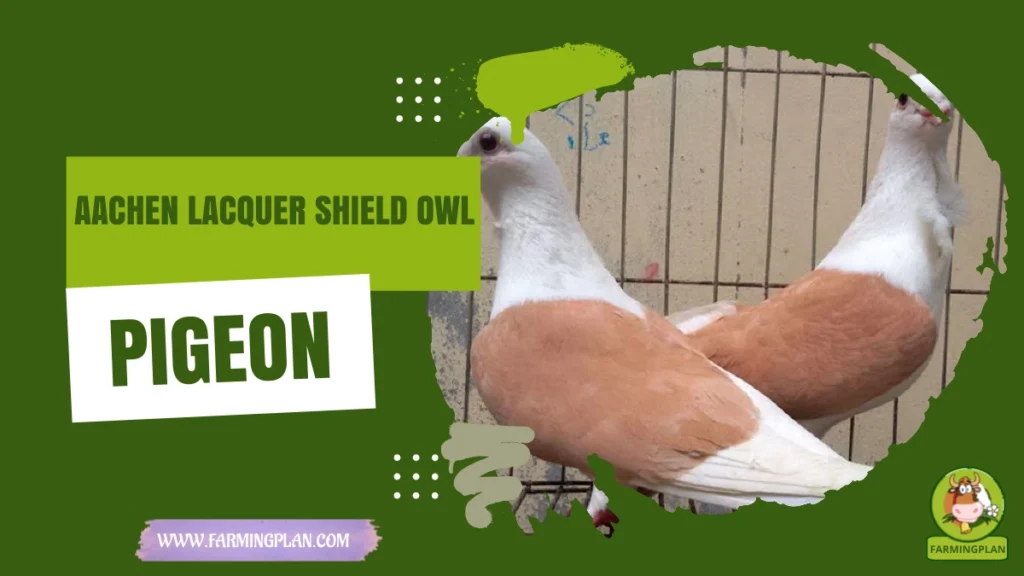Let me introduce you to one of the fanciest, most charming pigeons I’ve ever had the pleasure of raising—the Antwerp Smerle Pigeon. From its beautiful posture to its owl-like face, this little bird is a real showstopper. Often seen fluttering about in exhibitions or preening itself like royalty, the Antwerp Smerle (sometimes just called “Smerle”) is a domesticated pigeon breed that’s full of personality and flair. Whether you’re a seasoned breeder or just starting out with fancy pigeons, this breed brings both a visual delight and a rewarding pet-keeping experience.

History & Origin Of Antwerp Smerle Pigeon
The Antwerp Smerle Pigeon, with its elegant roots tracing back to Belgium, specifically the Antwerp region, carries a rich history that dates back to the 18th century. It was originally bred for both performance and beauty by Belgian fanciers, a tradition that continues to this day. The breed came into popularity through selective breeding from various fancy and utility pigeon types, possibly including owl pigeons and homing pigeons.
The goal was to create a bird with a proud posture, short beak, and a unique facial expression that would captivate judges and enthusiasts alike. During the 19th and early 20th centuries, the Antwerp Smerle became a regular feature at European pigeon shows. Clubs like the British Antwerp Smerle Club and the National Pigeon Association helped preserve the breed’s standards. To this day, its lineage remains a point of pride for breeders who appreciate traditional, heritage pigeon breeds.
Read More: Oscar Fish Care Guide: Vibrant Companions For Aquariums
Key Characteristics & Variations of Antwerp Smerle Pigeon
One look at an Antwerp Smerle, and you’ll know you’re not dealing with just any pigeon. This bird has a strikingly upright posture, a stout body, and a very short, thick beak. It’s got a wide chest, a slightly curved neck, and a confident stance that gives off real “I-own-this-roost” energy. One of the most captivating features of the Antwerp Smerle Pigeon is its head. It’s round, almost owl-like, with a full, expressive face that sets it apart from other pigeon breeds.
The eyes are bright and bold, often framed by feathered brows that add to their charming, serious expression. Antwerp Smerles come in several beautiful color varieties—blue, black, red, yellow, silver, and even pied patterns. Their feathers are smooth and tight to the body, creating a polished, tidy appearance. These birds are compact, usually weighing between 10–14 ounces. While not flashy fliers, they sure are strutters on the ground!
Nature & Temperament of Antwerp Smerle Pigeon
Despite their show-bird appearance, Antwerp Smerle Pigeons are some of the most affectionate and trainable pigeons I’ve worked with. They’re naturally curious, calm, and intelligent. Some can even recognize their handlers and enjoy gentle interaction like a calm pet bird. They thrive in quiet, stable environments and prefer structured routines.
If you’re raising them with other fancy pigeons or birds, they usually get along fine as long as there’s enough space and minimal stress. They’re not loud or overly active, which makes them ideal for hobbyists who want a low-drama, beautiful companion. I’ve also noticed they’re great with kids—gentle enough for a beginner but fancy enough to impress even veteran breeders.
Food & Diet For Healthy Antwerp Smerle Pigeon
Feeding Antwerp Smerle Pigeons is straightforward if you stick to quality and balance. I usually go with a mix of high-quality pigeon grain blends that include millet, corn, wheat, and peas. For added protein, especially during molting or breeding, I mix in some pelleted pigeon feed. Fresh water should always be available. Trust me, nothing stresses a pigeon out faster than stale or dirty water.
I also offer grit and mineral supplements like crushed oyster shells or calcium blocks to support digestion and strong eggshells. Avoid feeding them processed human food, salty snacks, or anything sugary. Leafy greens like spinach or lettuce once or twice a week can be a nice treat. Just remember, the goal is to keep their feathers smooth, their energy high, and their digestion on point.
“Feathers Don’t Make The Bird—But The Antwerp Smerle Sure Proves They Help!”
Beauty With Purpose of Antwerp Smerle Pigeon
While they don’t have the homing skills of true racing pigeons, Antwerp Smerles are prized for their ornamental beauty and show value. If you’ve ever been to a pigeon show, you’ve probably seen them strut their stuff in the fancy pigeon section. Their confident posture, symmetrical build, and expressive face make them real crowd-pleasers.
They’re often entered into competitive exhibitions where points are awarded based on breed standards outlined by pigeon organizations like the EE and National Pigeon Association. Some folks also keep them simply as backyard companions. Their manageable size and sweet temperament make them perfect for small lofts or even large aviaries. I’ve even had people tell me their Smerles were a hit with kids at school events or local fairs!
Read More: Icelandic Sheep: Ancient Breed With Modern Magic
What Makes Them Special of Antwerp Smerle Pigeon
The Antwerp Smerle isn’t just a pretty face—it’s got plenty of cool qualities that set it apart. Here’s what makes this breed unique in the world of fancy pigeons:
- Short, Thick Beak: Gives the face an adorable owl-like charm.
- Erect Posture: Proud, almost statuesque appearance that catches the eye.
- Compact Build: Strong, muscular body that’s both tough and graceful.
- Personable Demeanor: Easily bonds with handlers, making it a joy to raise.
- Diverse Colors: Wide range of color morphs that stay vibrant with good care.
- Low Maintenance: Easier to keep clean and healthy compared to fluffier breeds.
They’re also known for their quiet confidence. They don’t flap around nervously or pick fights. These birds carry themselves with the poise of champions—just one more reason they’re a favorite of mine.
Health Issues & Prevention of Antwerp Smerle Pigeon
Keeping your Antwerp Smerle Pigeon healthy is all about routine and observation. They’re generally hardy birds, but like any breed, they can run into problems if neglected. Watch out for common pigeon issues like canker (trichomoniasis), paramyxovirus, mites, or coccidiosis. Symptoms can include ruffled feathers, diarrhea, lethargy, or trouble eating. I make it a habit to check their eyes, droppings, and weight weekly.
To prevent issues:
- Clean the loft weekly.
- Use pigeon-safe disinfectants.
- Quarantine new birds before introducing them.
- Provide clean water and balanced diet.
- Vaccinate annually if local laws recommend it.
A healthy Smerle will have bright eyes, smooth feathers, and a bold stance. If something feels “off,” trust your gut and get help from an avian vet.
Step-By-Step Pet Owner Care Guide
Caring for an Antwerp Smerle Pigeon doesn’t have to be complicated. Whether you’re keeping one for a show or just as a feathered friend, this care guide breaks it all down.
Step 1: Build Or Buy A Proper Loft
Every great pigeon starts with a great home. I suggest a dry, well-ventilated loft, about 3–4 square feet per bird. Make sure it’s predator-proof with pigeon netting and not exposed to drafts. Use wire floors or slotted boards for easier cleaning. Install perches and low nesting boxes. I prefer wooden boxes with straw or shredded paper. Keep feeders and waterers slightly elevated to reduce contamination. Clean thoroughly every week.
Step 2: Handle With Care & Build Trust
When you first bring your Smerle home, give it a few days to settle in. Talk to them gently, and offer millet by hand to build trust. Hold them softly but firmly to avoid injury. Antwerp Smerles can learn basic routines and even respond to their names with time. I’ve trained mine to hop onto my finger when called—just be patient and consistent.
Step 3: Keep Them Groomed & Show-Ready
Although they don’t need trimming like long-feathered breeds, Antwerp Smerles benefit from regular checks. I keep a soft brush on hand to wipe away dust. During molting, offer extra protein to support new feather growth. I also use natural mite powders once a month to prevent infestations. Clean eyes and nostrils gently with a damp cloth if needed.
Step 4: Breeding & Raising Chicks
If you want to breed Antwerp Smerles, pair healthy birds around spring. Provide nesting boxes and nesting material like straw. The female lays 2 eggs, and both parents help incubate them. Chicks hatch in about 17–19 days. Keep the loft quiet and clean, and offer a diet rich in calcium and protein for the parents. Watch for squab growth and feather development.
My Best Expert Tips For Smerle Success
- Always quarantine new birds for 2 weeks.
- Keep lofts dry and warm in winter.
- Use grit with probiotics to help digestion.
- Show birds? Bathe them 2–3 days before events.
- Keep a pigeon journal to track health and behavior.
- Don’t skip perch rotation to prevent foot sores.
- Join a local fancy pigeon club for support and advice.
Tip Quote: “Healthy Pigeons Don’t Just Happen—They’re Raised With Patience, Care, And Clean Water!”
FAQs
Are Antwerp Smerle pigeons good for beginners?
Yes! They’re calm, friendly, and easy to care for, making them great for novice pigeon keepers.
How much do Antwerp Smerle pigeons cost?
Prices vary from $25 to $100+, depending on pedigree and show quality.
Can Antwerp Smerles fly well?
They can fly, but they’re not strong fliers. They’re more about form than function.
How often do I clean their loft?
Clean once a week for best results. Daily spot-cleaning is helpful too.
Do Antwerp Smerles need companions?
Yes, they’re social and do best in pairs or small flocks.
Conclusion
Raising Antwerp Smerle Pigeons has been one of the most rewarding experiences of my bird-keeping life. Their gentle nature, striking looks, and ease of care make them a top choice for pet owners, breeders, and show enthusiasts. Whether you’re setting up your first loft or adding to a growing flock, this pigeon offers beauty, charm, and a whole lot of personality. If you’ve ever considered getting into fancy pigeons, the Smerle is a fantastic place to start. Feel free to share your experience, leave a comment, or pass this guide along to fellow bird lovers!


